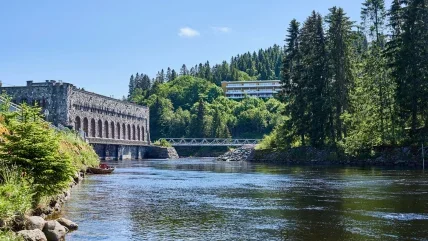
Engineers at Utah State University’s Utah Water Research Laboratory have constructed a 1:50 scale model of the Oroville Dam spillway to assist in the structure’s repair.
Chief engineers Dr. Michael Johnson and Dr. Zachary Sharp worked with a team of 15 engineers and technicians to construct the working model in just 40 days in a bid to help engineers in California test possible repair options.
The approximately 100ft-long, 60ft-wide model replicates the spillway in its current state and features the terrain conditions that were formed following the damaging flow events in February.
Johnson, who specializes in fluid mechanics and experimental hydraulics, says the model will provide useful information about hydraulic conditions in and around the damaged spillway. He and his team are currently taking measurements on various sections of the model to determine depth of flows, wave action, pressures, velocity profiles and more.
“Our goal is to assist the design team in California in making the best decisions moving forward with data from the model,” said Johnson. “Data from the model will provide useful information that will help engineers there make better-informed decisions about repair and replacement.”
This is the second time a Utah Water Research Lab team has been involved with engineering efforts at Oroville Dam. Johnson helped design an engineering solution that improves the river valve outlet system in low-level reservoir conditions. His work helped alleviate the effects of drought from 2014-2016.






